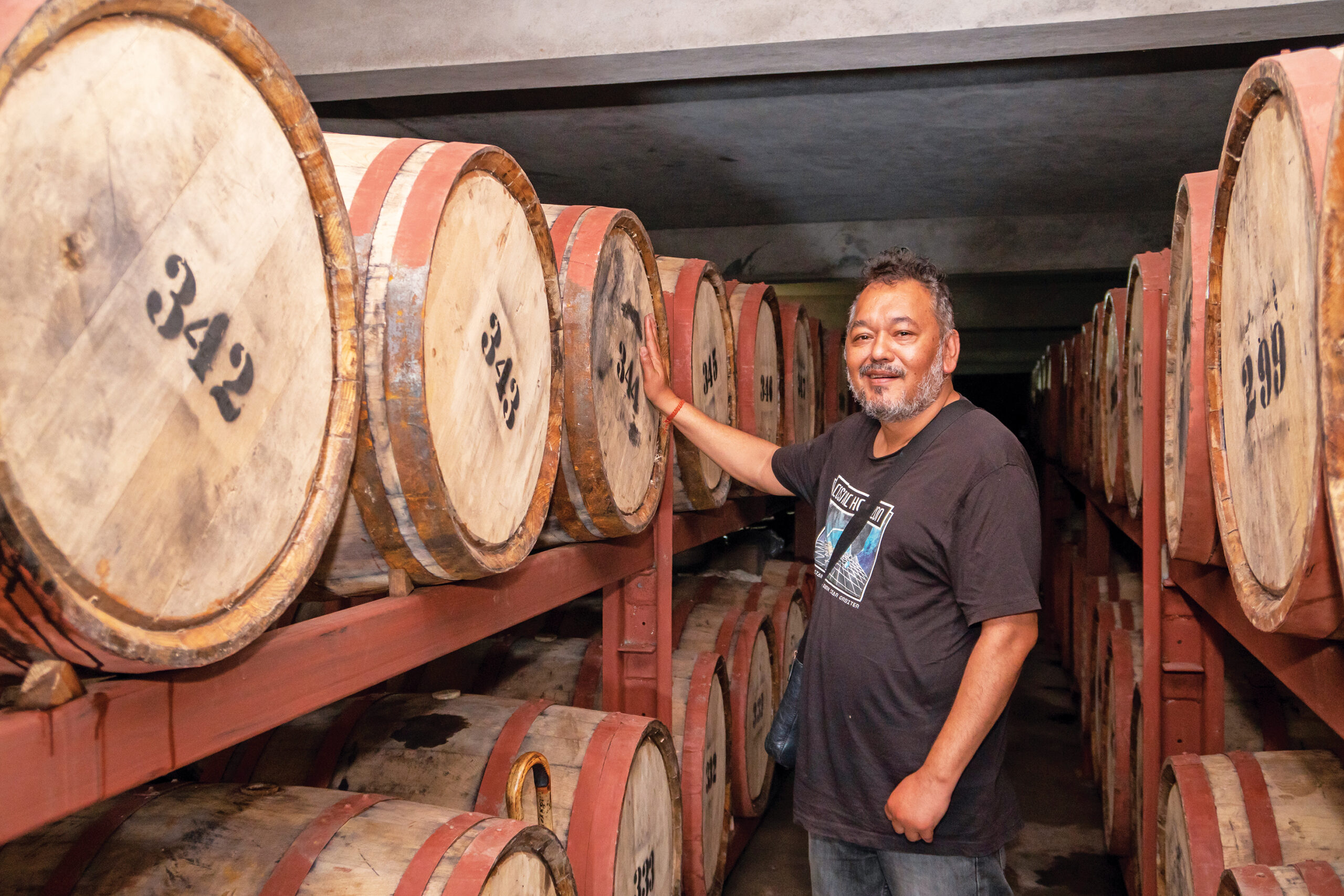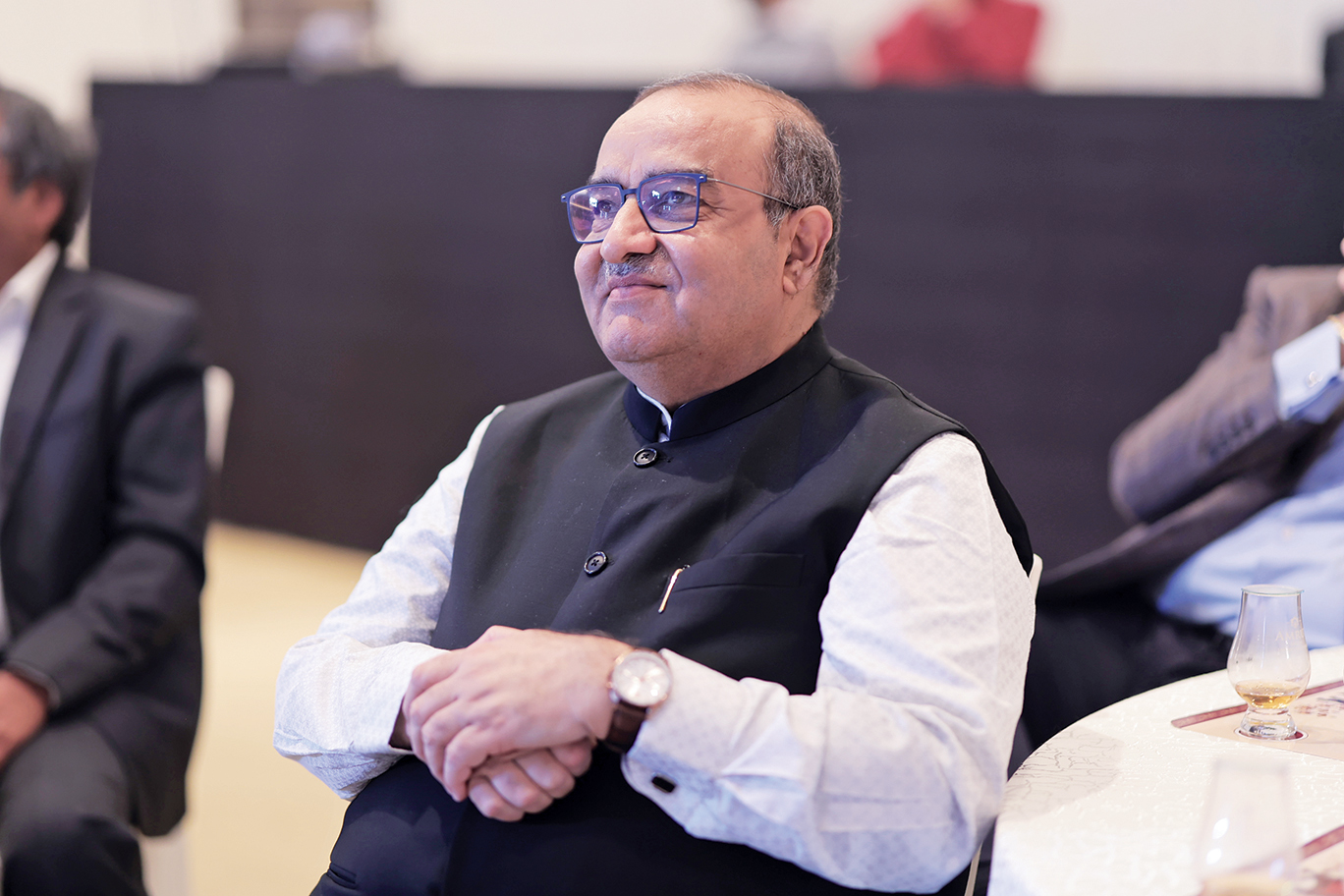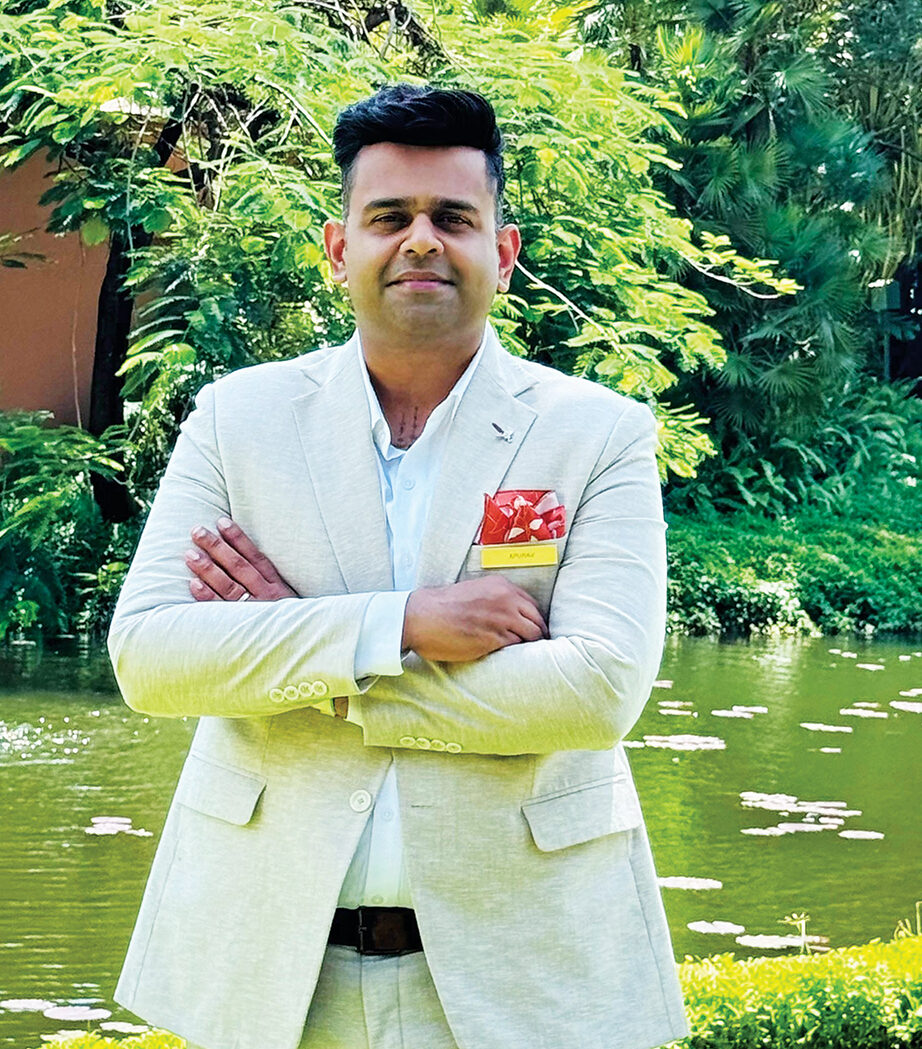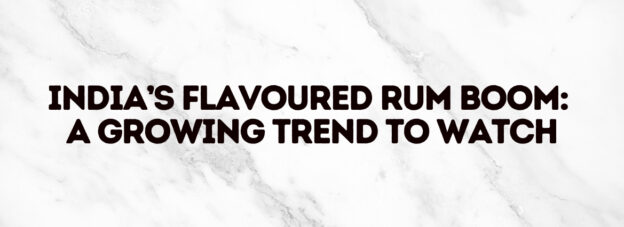Flavoured rum is redefining India’s spirits industry, appealing to modern drinkers with its versatility and unique profiles. As new innovations emerge, the segment continues to grow, transforming traditions and opening new markets
India’s fast-expanding $52.4 billion alcobev sector now contributes approximately 2% to the nation’s GDP. This achievement, largely attributed to the past two decades of remarkable growth, reflects an industry that continues to adapt to evolving consumer preferences. With the market forecasted to expand by nearly 7% in the coming years, experts believe the country is only beginning to tap into its enormous alcobev potential.
Within the broader industry lies the rum category, which, despite its longstanding presence, is now experiencing significant transformation. Currently valued at just under $1 billion, the segment is projected to exceed $1.4 billion by 2029, driven by consistent annual growth of 2% to 4%. This momentum is further amplified by innovative players introducing flavoured rum varieties, enhancing the drink with unique tastes and vibrant appeal.
For industry stakeholders, the objective is to build on these advancements to catalyse further growth across the entire alcobev ecosystem. Flavoured rum, in particular, has become a regular feature in bars, nightclubs, and ready-to-drink formats, catering to consumers who prefer enjoying rum at home.
Exploring the growth of flavoured rum in India

India’s rum industry is an emerging force within the larger alcobev landscape. According to Vicky Chand, Managing Director of Radiant Manufacturers North East, flavoured rum in the country is produced in two distinct ways: one adhering to the global standard of using a sugarcane-based spirit as the foundation, and the other employing alternative blending materials. Chand highlights that these approaches are chosen by distillers based on style and preference.

Radiant’s award-winning product, Lost Treasure Coffee Rum, is gaining popularity with its unique blend of grain, cane, and malt spirits infused with cold brew coffee. This combination delivers three distinct yet harmonious profiles that connect with flavoured rum enthusiasts. Explaining the growing appeal of flavoured rum, Raju Vaziraney, Advising President of IMFL, India Glycols Ltd., credits it to the adventurous nature of young consumers.
“Young Indian consumers are dynamic and aspirational. They actively seek new recipes and flavours to share experiences with their peers. This curiosity sparked the popularity of flavoured vodka over a decade ago, followed by gin, and now it’s rum’s turn,” Vaziraney explains. “Flavoured spirits are accessible and versatile, allowing consumers to enjoy them without the complexity of crafting cocktails. This is especially appealing to those unfamiliar with mixology.”

The perception of rum as a “winter drink” has also progressed, with new varieties dispelling the notion of seasonality. Flavoured rum has broadened the drink’s appeal, making it a choice for all seasons. John Royerr, Founder of Ochre Spirits, notes that consumers are increasingly discerning.
“Drinkers now value smoother, more flavourful spirits. Artisanal rums, often crafted in small batches, deliver a premium experience distinct from mass-market brands. This shift is reshaping traditions and creating space for innovative offerings,” Royerr adds.
He also points to India’s growing cocktail culture, which has fuelled demand for flavoured rums. These spirits add variety and depth to home bars and social occasions, appealing to consumers seeking a sophisticated drinking experience.
For instance, Bacardi Mango Chili combines the beloved flavour of mango with a spicy kick, demonstrating how brands are creatively leveraging local tastes. This product is now widely available across several states, from Pondicherry to Uttarakhand. Ashish Jha, Brand Lead at BACARDÍ India, highlights the strategy behind such launches. “Understanding Indian consumers’ preferences is essential. Mango is a beloved flavour, while chili adds a zestful edge. This blend is in line with local tastes and offers something fresh to the market,” he says.
Assessing the opportunities
The burgeoning flavoured rum segment presents significant opportunities. While traditional rums are often viewed as occasional beverages, flavoured varieties cater to younger audiences unafraid to experiment. However, the premium nature of some flavoured rums necessitates a focussed market approach.
For Chand’s Lost Treasure Coffee Rum, the current strategy involves targetting the Northeast, a region with a growing appetite for distinctive rums. “We use cone spirit, a scarce ingredient, which limits our initial reach. By concentrating locally, we aim to establish our brand and later diversify into categories like white rum,” Chand shares.
Vaziraney’s Zumba Spiced Rum is similarly carving out its niche. “Younger consumers prefer new flavours, while traditionalists stick to classic blends. We’re catering to adventurous drinkers, aiming for nationwide presence and eventual international expansion,” he remarks.

Tarun Samvedi, Director of F&B at The Resort, Mumbai, observes this evolution. “Our venues often attract guests looking for distinctive experiences, including flavoured rum. Signature drinks like tropical punches and spiced mojitos highlight the versatility and visual appeal of these options. For instance, the tropical punch is ideal for summer-themed gatherings, while the spiced mojito offers a warm, aromatic touch perfect for cooler evenings or celebrations. Patrons who may not usually enjoy the intensity of traditional rum are drawn to the lighter, more refreshing character of flavoured options,” he notes.
Discussing his preferred brands, he adds, “Bacardi stands out for its diverse range of flavours, which work beautifully in various cocktails, from tropical punches to classic daiquiris. Captain Morgan delivers a rich complexity with its spiced and flavoured offerings, making it a favourite for mojitos and hot toddies. Malibu is also a staple, known for its signature coconut rum, a perfect choice for tropical or beach-inspired drinks.”

Apurva Bhatia, Beverage Manager at The St. Regis Goa Resort, highlights the importance of ice and presentation. “Crushed ice enhances the chill and adds a slushy texture to tropical cocktails, while clear ice blocks offer stunning aesthetics for showcasing rum’s vibrant hues. Two of my most requested flavoured rum cocktails are Susegado Daiquiri – a blend of coconut rum, homemade jackfruit, palm sugar, vetiver cordial, house citrus, topped with jackfruit marshmallow – and Spiced Island Julip, which combines spiced rum, spearmint, house citrus (grapefruit, lime, orange), brown syrup, and homemade ginger beer. Personally, I lean toward Diplomatico Mantuano for sipping and Ron Matusalem for mixed beverages,” Bhatia elaborates.
Expanding consumer preferences
A notable trend driving the growth of flavoured rum is the mounting interest in health-conscious drinking. Consumers are seeking low-calorie, naturally flavoured options that align with their wellness goals. This shift has prompted many brands to explore organic ingredients, ensuring their offerings cater to the sprouting demands of mindful drinkers. This approach has broadened the appeal of flavoured rum, making it a viable choice for those who prioritise balance without compromising on taste.
Additionally, the appeal of flavoured rum extends to culinary applications. Mixologists and chefs alike are incorporating these rums into innovative dishes and desserts, further strengthening their place in contemporary dining experiences. For example, rum-infused cakes and flambéed dishes featuring tropical rum varieties are gaining traction in high-end restaurants and home kitchens alike.
The versatility of flavoured rum has also led to its adoption in events and social gatherings. Wedding planners are now including rum-based cocktails as part of curated drink menus, adding an element of uniqueness to the celebrations. These custom drinks, often inspired by regional flavours, bring a personal touch to festive occasions and elevate the guest experience.
Flavoured rum is further finding its way into experiential marketing campaigns, where brands create immersive experiences for their customers. Pop-up events, themed tastings, and collaborations with lifestyle influencers are becoming common methods to engage consumers. By offering an interactive platform, brands can forge stronger connections with their audience while educating them about the possibilities of flavoured rum.
Pricing, target markets, and upcoming plans
Speaking of pricing, Royerr explains, “Our Nutty Berry Rum is priced competitively at ₹1450 for a 750 ml bottle. Despite the intricate crafting process and premium ingredients, we have ensured accessibility for our customers, balancing quality with affordability.” Adding to the discussion, Vaziraney stresses, “Zumba Spiced Rum caters to younger, adventurous consumers who seek distinct flavours. Our spiced rum has successfully launched in UP and Uttarakhand, with approval for distribution through paramilitary forces nationwide. We’re now preparing to expand into new domestic markets this winter and explore international opportunities in the near future. Despite its semi-premium positioning, we have ensured that pricing remains competitive to attract a broader audience while offering an elevated experience.”
Bringing a regional perspective, Chand shares insights on their market strategy, “Lost Treasure Coffee Rum is designed for discerning palates in the Northeast. Although the scarcity of cane spirit limits distribution, this focus has allowed us to establish a strong foothold locally.”
On consumer response, Royerr observes, “Flavoured and artisanal spirits are transcending geographical boundaries. From bustling metros to smaller towns, there is growing enthusiasm for premium flavoured rums, reflecting their universal appeal.” Chand echoes this sentiment, adding, “In Assam, we’ve noticed that well-travelled consumers often take our spirits to larger cities like Mumbai and Delhi, mirroring the region’s growing expertise in crafting high-quality rums. This organic promotion has been invaluable in building our brand.”
Expanding on innovations, Royerr elaborates, “At Ochre Spirits, we meticulously source ingredients like cherries, oranges, and grapefruits from across the country, complemented by global-quality nuts for depth. Through maceration and distillation techniques, we ensure smooth, natural flavours. This dedication is central to our mission to introduce agave spirits soon.”
Vaziraney adds to the innovation dialogue, “Our journey with Zumba White Rum infused with lemon citrus flavours has been promising. As we solidify our presence, we plan to introduce additional flavours and limited editions, keeping the momentum alive through ongoing consumer research.”
Chand also hints at exciting developments, “We’re exploring barrel aging with coffee beans sourced from diverse regions of India. These limited editions will further elevate our offerings, creating a unique identity in the flavoured rum segment.”
The road ahead
Flavoured rum is poised for continued growth as more and more consumers appreciate spirits for their taste and character rather than solely for their potency. Bhatia emphasises the distinct profile offered by flavoured rums. “These rums provide sweet, fruity, or spicy notes, broadening their appeal to those who may not enjoy traditional blends,” he notes. As this segment grows, the expectation is that more brands will enter the market, each striving to stand out through innovation and quality.
Differentiation is key, according to Chand. His “Think Global, Act Local” philosophy ensures a balance between international standards and local sensibilities. This approach creates a “glocal” brand that resonates with diverse audiences. Moreover, the presentation and marketing of flavoured rums are adapting to meet shifting consumer demands. Stylish, eye-catching bottles and eco-friendly packaging are becoming essential components that captivate the modern buyer. This attention to design and environmental consciousness aids brands in establishing distinction in a highly competitive arena.

